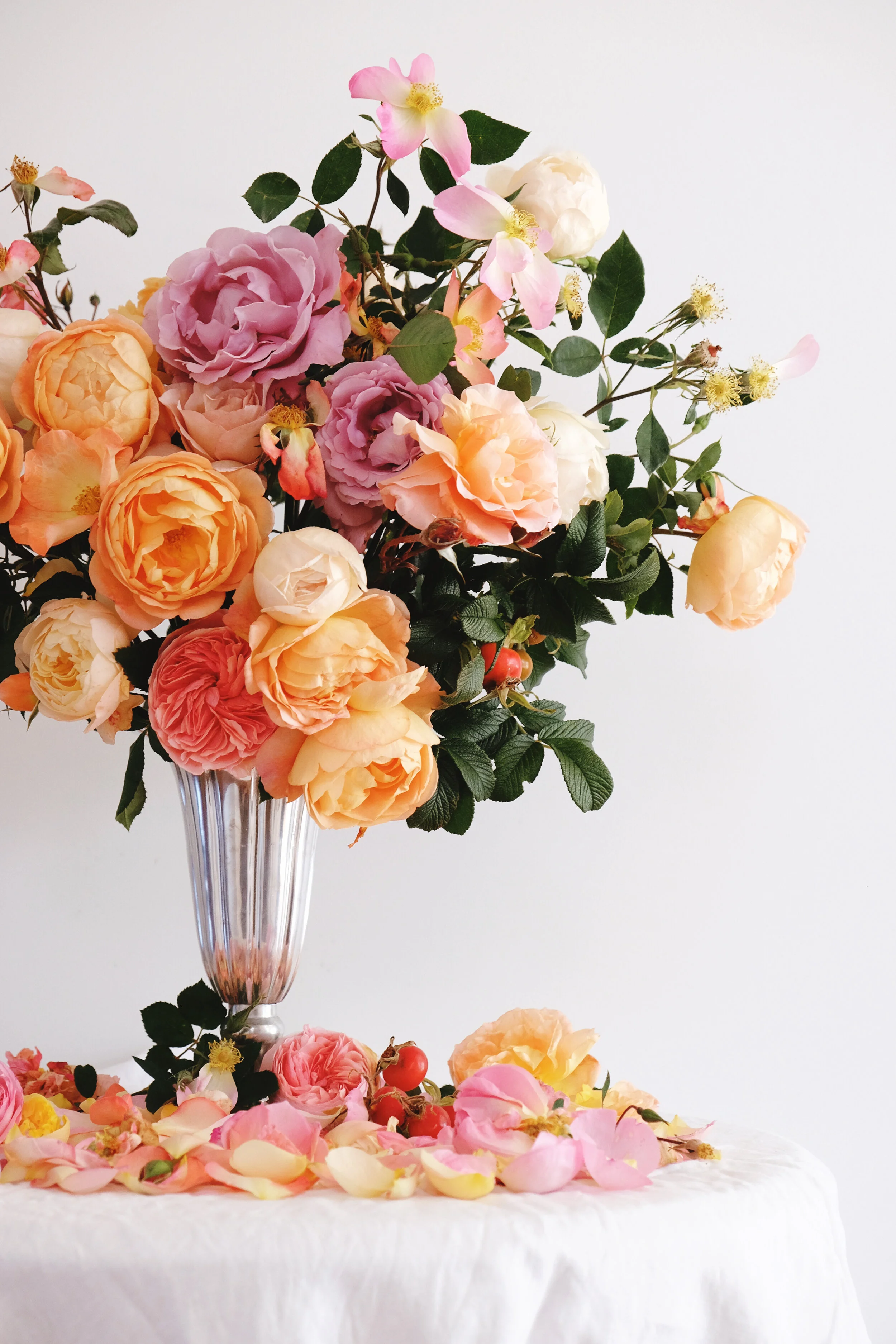The language of plants
/While on holiday a few years ago, I arrived at a tragic gap in my book line up where I was finished, but my companions weren’t quite ready to share their reading options. One friend dug out a bonus book from her bag, and I greedily lapped it up. The Language of Flowers by American writer Vanessa Diffenbaugh centred on a fragile young woman who adopted the Victorian system of communicating her thoughts and feelings by symbolically combining specific flowers in bouquets. It was a terrific story, and I was instantly gripped by the romanticism of this secret language, immediately ordering two new books online to learn more.
In the Victorian system of Floriography - flowers can represent many different feelings and meanings. So many in fact that this secret way of communicating could result in many a crossed wire!
Plants are symbolic and used to represent many places, traditions and cultural values. Nations and regions around the world have emblematic flowers and plants, as do some religions. There are multiple flowers assigned to birth dates and zodiac signs, and to mark various anniversaries over a lifetime.
Māoritanga holds the tī kōuka (cabbage tree) as a signal of independence while harakeke (flax), with its strong outside leaves and fresh central growth, represents parents and their children. Respected, important leaders are compared to the great tōtara tree, while ongaonga (a type of tree nettle) might be used to describe a difficult person, according to Te Ahukaramū Charles Royal in Te Waonui a Tāne – Forest Mythology, written and published on teara.govt.nz.
In China there is a system of messaging based on how many roses are gifted or positioned in a vase for display. A single rose signifies “you are my only love”, while 8 stems ask “let us make up” and 77 is a proposal of marriage.
Although not native in India, marigolds are incredibly important in Hindu celebrations. When used during weddings they represent the sun, channelling brightness and positive energy. All in all, plants allow humankind to communicate outside of spoken language.
Roses are steeped in different meaning depending on colour and amount. Mostly around the feminine and affairs of the heart.
The natural world offers many powerful healing properties, however folklore also delivers more mystical advantages from the presence of different plants. For example, the chrysanthemum in Malta and Italy is considered bad luck when brought into the house, while in China it is thought to bring happiness.
Other beliefs from around the world include oriental poppy seed heads being gilded and worn to attract wealth, while popping a pod under your pillow is thought to bring on dreams that may answer life questions. Making a wish on the first violet of the season will guarantee it comes true, and carrying or wearing a violet will protect against bad spirits. The examples are intriguing and endless.
In 19th century Victorian England, the very poised and private society became swept up in the notion of unspoken messaging, giving detailed meaning and sentiment to the combinations of flowers given or worn. Small posies, commonly known as “tussie-mussies”, were used as “talking bouquets”, offering silent but multi layered messages when gifted or simply paraded.
Known as Floriography, the complexity of specific meanings led to entire dictionaries being written, often with conflicting information. This led to constant miscommunication no doubt – jilting lovers at every turn. For example, a combination of peonies, feverfew and sage could be used to send wishes of good health. However, an individual peony could also represent romance, female fertility, wealth and hope for a good marriage. When investigating further, the common peony could nod at unrealised desires, anger, shame, life and loyalty –amongst many other things.
I’d go as far to conclude that bouquets were probably best sent with a glossary.
Peonies can symbolise romance and female fertility as well as anger and shame. If meaning is what you are offering, best to include a glossary!
I also stumbled across the Doctrine of Signatures. Emerging in ancient Greece and explored further by European alchemists, herbalists and philosophers, this concept focuses on the idea that plants resembling human body parts can in turn be used to treat problems in those matching body parts.
That meant walnuts benefited the brain, avocados the uterus, tomatoes the heart and grapes and berries the lungs. Ever looked closely at a cross-section of a slice of carrot? This was perceived as an eyeball.
Jasmine can signify cheerfulness
Raspberries can symbolise temptation or scornful beauty among many others!
Even in my own little world, some plants hold a little extra magic and whimsy for me. Rosebuds and rosehips, raspberries on the cane, twiggy stems of wintersweet and tendrils of flowering jasmine both evoke fond childhood memories, and a sense of ceremony when I bring them inside to enjoy.
In Floriography, roses generally gravitate around affairs for the heart (with differing meanings depending on colour), raspberries hint at temptation or scornful beauty, wintersweet indicates faithfulness, and jasmine indicates cheerfulness and wealth. Some hits and misses there that I will happily pick and choose from, if ever the need arises.
This article was first featured in my Stuff ‘Homed’ gardening column for beginners and The Press on June 10th 2021
All words and images are my own, taken in my home and garden in Christchurch, New Zealand.








